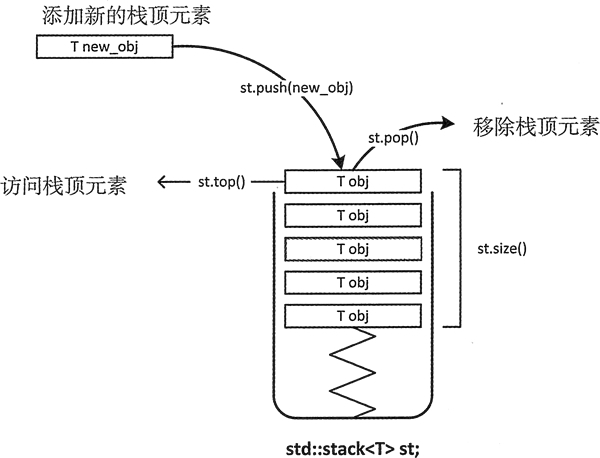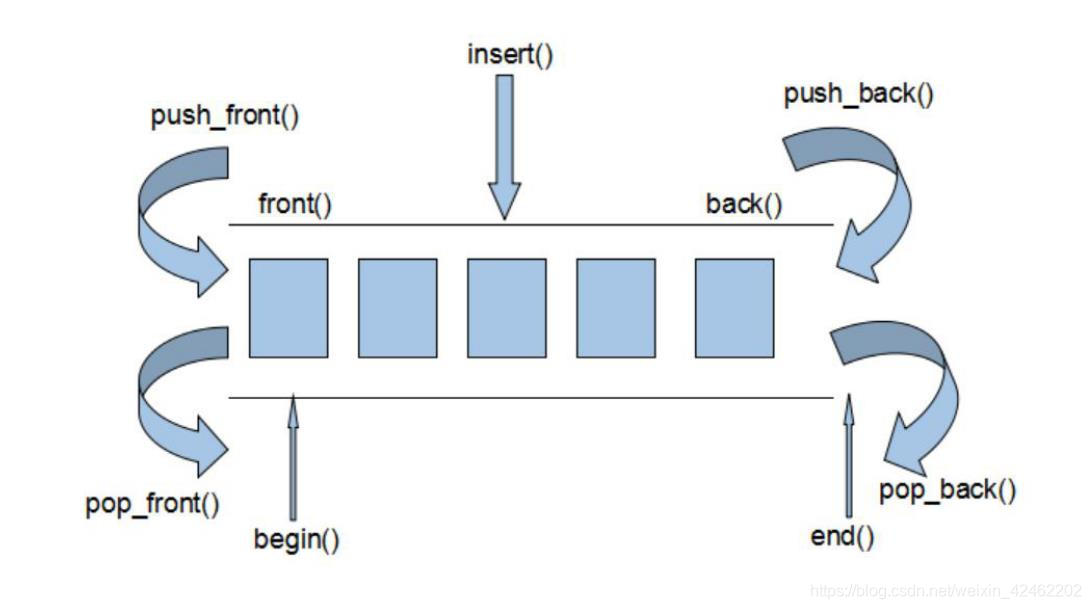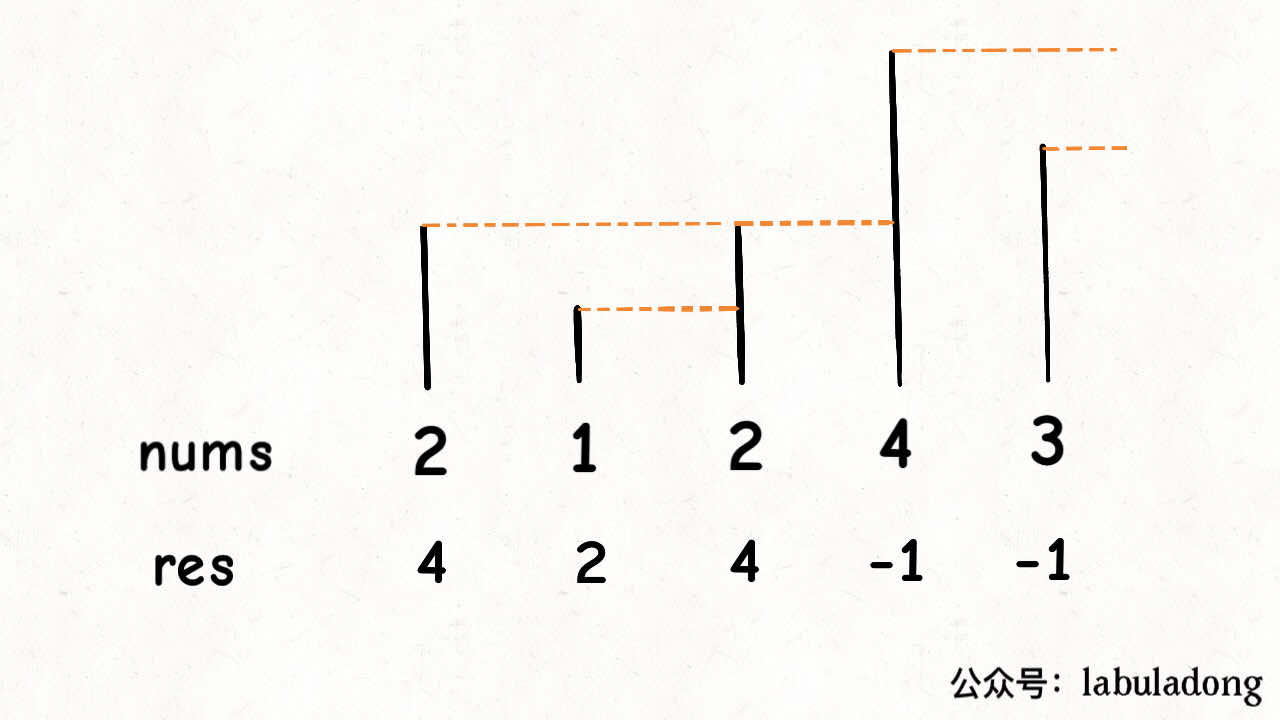桟、队列相关
stack:

括号匹配 20 :http://www.cnblogs.com/zle1992/p/8469603.html
最长括号匹配32 :http://www.cnblogs.com/zle1992/p/8469694.html
RPN逆波兰表达式 150 :http://www.cnblogs.com/zle1992/p/8469734.html
232. Implement Queue using Stacks(队列实现栈)
queue:

deque

单调栈:
栈(stack)是很简单的一种数据结构,先进后出的逻辑顺序,符合某些问题的特点,比如说函数调用栈。
单调栈实际上就是栈,只是利用了一些巧妙的逻辑,使得每次新元素入栈后,栈内的元素都保持有序(单调递增或单调递减)。
https://leetcode-cn.com/problems/remove-duplicate-letters/solution/yi-zhao-chi-bian-li-kou-si-dao-ti-ma-ma-zai-ye-b-4/
以下列出了单调栈的问题,供大家参考。
序号 题目 题解
5 901. 股票价格跨度(中等) 「力扣」第 901 题:股票价格跨度(单调栈)
听起来有点像堆(heap)?不是的,单调栈用途不太广泛,只处理一种典型的问题,叫做 Next Greater Element。本文用讲解单调队列的算法模版解决这类问题,并且探讨处理「循环数组」的策略。
496. Next Greater Element I (单调栈)
首先,看一下 Next Greater Number 的原始问题,这是力扣第 496 题「下一个更大元素 I」:
给你一个数组,返回一个等长的数组,对应索引存储着下一个更大元素,如果没有更大的元素,就存 -1。
比如说,输入一个数组 nums = [2,1,2,4,3],你返回数组 [4,2,4,-1,-1]。
解释:第一个 2 后面比 2 大的数是 4; 1 后面比 1 大的数是 2;第二个 2 后面比 2 大的数是 4; 4 后面没有比 4 大的数,填 -1;3 后面没有比 3 大的数,填 -1。
这道题的暴力解法很好想到,就是对每个元素后面都进行扫描,找到第一个更大的元素就行了。但是暴力解法的时间复杂度是 O(n^2)。
这个问题可以这样抽象思考:把数组的元素想象成并列站立的人,元素大小想象成人的身高。这些人面对你站成一列,如何求元素「2」的 Next Greater Number 呢?很简单,如果能够看到元素「2」,那么他后面可见的第一个人就是「2」的 Next Greater Number,因为比「2」小的元素身高不够,都被「2」挡住了,第一个露出来的就是答案。

vector<int> nextGreaterElement(vector<int>& nums) { vector<int> res(nums.size()); // 存放答案的数组 stack<int> s; // 倒着往栈里放 for (int i = nums.size() - 1; i >= 0; i--) { // 判定个子高矮 while (!s.empty() && s.top() <= nums[i]) { // 矮个起开,反正也被挡着了。。。 s.pop(); } // nums[i] 身后的 next great number res[i] = s.empty() ? -1 : s.top(); // s.push(nums[i]); } return res; }
循环数组(最后一个元素的下一个元素是数组的第一个元素)的下一个更大元素。
同样是 Next Greater Number,现在假设给你的数组是个环形的,如何处理?力扣第 503 题「下一个更大元素 II」就是这个问题:
比如输入一个数组 [2,1,2,4,3],你返回数组 [4,2,4,-1,4]。拥有了环形属性,最后一个元素 3 绕了一圈后找到了比自己大的元素 4。
一般是通过 % 运算符求模(余数),来获得环形特效:
这个问题肯定还是要用单调栈的解题模板,但难点在于,比如输入是 [2,1,2,4,3],对于最后一个元素 3,如何找到元素 4 作为 Next Greater Number。
对于这种需求,常用套路就是将数
1 class Solution { 2 public: 3 vector<int> nextGreaterElements(vector<int>& nums) { 4 stack<int> stk; 5 int n = nums.size(); 6 vector<int> res(n); 7 for(int i = n*2-1;i >=0; --i) { 8 while(!stk.empty()&& stk.top()<=nums[i%n]) { 9 stk.pop(); 10 } 11 res[i%n] = stk.empty()?-1:stk.top(); 12 stk.push(nums[i%n]); 13 } 14 return res; 15 } 16 };
1 class Solution { 2 public: 3 vector<int> dailyTemperatures(vector<int>& temperatures) { 4 stack<int> stk; 5 vector<int> res(temperatures.size()); 6 for(int i = temperatures.size() -1 ; i >= 0 ; --i) { 7 while(!stk.empty() && temperatures[stk.top()] <= temperatures[i]) { 8 stk.pop(); 9 } 10 res[i] = stk.empty()?0:stk.top() - i; 11 stk.push(i); 12 } 13 return res; 14 } 15 };
1.视野总和
描叙:有n个人站队,所有的人全部向右看,个子高的可以看到个子低的发型,给出每个人的身高,问所有人能看到其他人发现总和是多少。
输入:4 3 7 1
输出:2
解释:个子为4的可以看到个子为3的发型,个子为7可以看到个子为1的身高,所以1+1=2
class Solution { public: int sight_sum(vector<int>& heights) { stack<int> stk; int sum = 0; for(int i =0;i < heights.size();i++) { while(!stk.empty() && heights[stk.top()] < heights[i]) { int top = stk.top(); stk.pop(); sum += (i-top-1); } stk.push(i); } return sum; } };
class Solution { public: int largestRectangleArea(vector<int>& heights) { stack<int> stk; int res = 0; int top = 0; heights.push_back(-1); stk.push(-1); for(int i =0;i < heights.size();i++) { while(stk.top()!=-1 && heights[stk.top()] > heights[i]) { top = stk.top(); stk.pop(); res = max(res, heights[top] *(i-stk.top()-1)); } stk.push(i); } return res; } };
class Solution: def removeDuplicateLetters(self, s: str) -> str: s_map = {} for i in s: if i in s_map: s_map[i]+=1 else: s_map[i] =1 stk = [] for ch in s: if ch not in stk: while stk and s_map[stk[-1]]>0 and ch < stk[-1]: stk.pop() stk.append(ch) s_map[ch]-=1 return "".join(stk)
单调递增栈,栈顶保存最大元素。
class Solution: def removeKdigits(self, num: str, k: int) -> str: stk = [] nk = len(num)-k for ch in num: while k and stk and ch < stk[-1]: stk.pop() k-=1 stk.append(ch) res = ''.join(stk[:nk]).lstrip('0') if res == "": res = "0" return res
class Solution: def maxNumber(self, nums1, nums2, k): def pick_max(nums, k): stack = [] drop = len(nums) - k for num in nums: while drop and stack and stack[-1] < num: stack.pop() drop -= 1 stack.append(num) return stack[:k] def merge(A, B): ans = [] while A and B: if A > B: ans.append(A.pop(0)) else: ans.append(B.pop(0)) while A: ans.append(A.pop(0)) while B: ans.append(B.pop(0)) return ans max_res = [] for i in range(k+1): if i <= len(nums1) and k-i <= len(nums2): max_res = max(max_res, merge(pick_max(nums1, i), pick_max(nums2, k-i))) return max_res
单调递减栈,栈顶保存最小值
class Solution {
public:
bool find132pattern(vector<int>& nums) {
stack<int> stk;
int top = INT_MIN;
//// s1 s3 s2
//keep the value of s3 as big as possible
//use a "sorted" stack to maintain the candidates of s2 and s3.
for(int i =nums.size()-1; i >=0;i--) {
if (top>nums[i]) return true;
while(!stk.empty() && nums[i] > stk.top()) {
top = stk.top();
stk.pop();
}
stk.push(nums[i]);
}
return false;
}
};
class Solution {
public:
int findUnsortedSubarray(vector<int>& nums) {
int start = INT_MAX;
int end = INT_MIN;
stack<int> stk;
stack<int> stk2;
for(int i = 0; i < nums.size(); i++) {
while(!stk.empty() && nums[i]< nums[stk.top()]) {
start = min(stk.top(),start);
stk.pop();
}
stk.push(i);
}
for(int i = nums.size() - 1; i >=0 ; i--) {
while(!stk2.empty() && nums[i] > nums[stk2.top()]) {
end = max(stk2.top(),end);
stk2.pop();
}
stk2.push(i);
}
if (start ==INT_MAX && end == INT_MIN) return 0;
return end - start +1;
}
};
单调队列:
239. Sliding Window Maximum (滑动窗口最大值, 大根堆or 单调队列)



 浙公网安备 33010602011771号
浙公网安备 33010602011771号